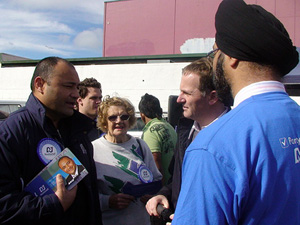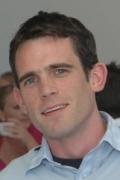
AUCKLAND (Pacific Scoop / Pacific Media Watch): As National meet with Māori Party politicians who are almost certain to be offered ministerial portfolios, both Pacific and Māori politicians are surveying the successes and the damage from the weekend’s election.
Labour candidate Chris Faafoi was returned to Parliament, after winning last year’s by-election, despite the Labour party vote slipping in his Mana electorate.
And Mana Party leader Hone Harawira also enjoyed local loyalty to keep his electoral seat, his second win this year after his resignation from Parliament and the Māori Party triggered a by-election in June.
National member for Maungakiekie Peseta Sam Lotu-Liga was returned with 48.9 per cent of the vote, an increased percentage from the last election.
But New Zealand’s 50th election certainly wasn’t the most popular.
Worst turnout
It was the worst voter turnout in New Zealand since 1884, with over 25 percent of registered voters not casting a vote. The official numbers are 2,254,581 voters, down 121,899 from 2008.
That meant despite winning government with an increased majority, National’s count was actually down ten percent to 957,769.
Former Labour MP Carmel Sepuloni lost a close battle for Waitakere, to the incumbent Minister for Social Development and Employment Paula Bennett. Special votes have not been counted, but Bennett currently has a lead of 349 votes.
That was despite Sepuloni’s plea for people to vote, and her campaigning on the rising cost of living for New Zealand families.
Not high enough on the Labour list, Sepuloni, of Tongan descent, will now bow out of Parliament.
Fewer eligible voters
The national manager of Electoral Enrolments Murray Wicks said they were still processing forms and there are plenty of special votes to come in, but he doesn’t think the low numbers will change.
“I’ll put my house on it,” he said. “There are less people enrolled, as a percentage of eligible voters, than there were in 2008.”
“Late last week we were 1.7 percent behind the 2008 figures.”
However, there is over 93 percent enrolment of those eligible, which is higher than Australia at their most recent election. It was getting to the polling booths that just didn’t happen.
Wicks said they tried to make it as easy as possible to get enrolled, but you can’t do much about convincing people to take the next step and actually voting.
“There are problem areas, and a number of different circumstances that make it hard,” he said.
Youth engagement
“The CDBs of Auckland and Wellington are difficult. There’s a high amount of young people in those populations and there’s a trend that it’s hard to get the young people engaged in the democratic process.”
Wicks also said the remote areas make it hard to get people enrolled, as well as university areas.
“Heading towards the election, of those that were not enrolled, 60 per cent were 18 to 29 years of age.”
Wicks said they have very successful programmes in schools, but once students move out of home it is hard to connect with them.



